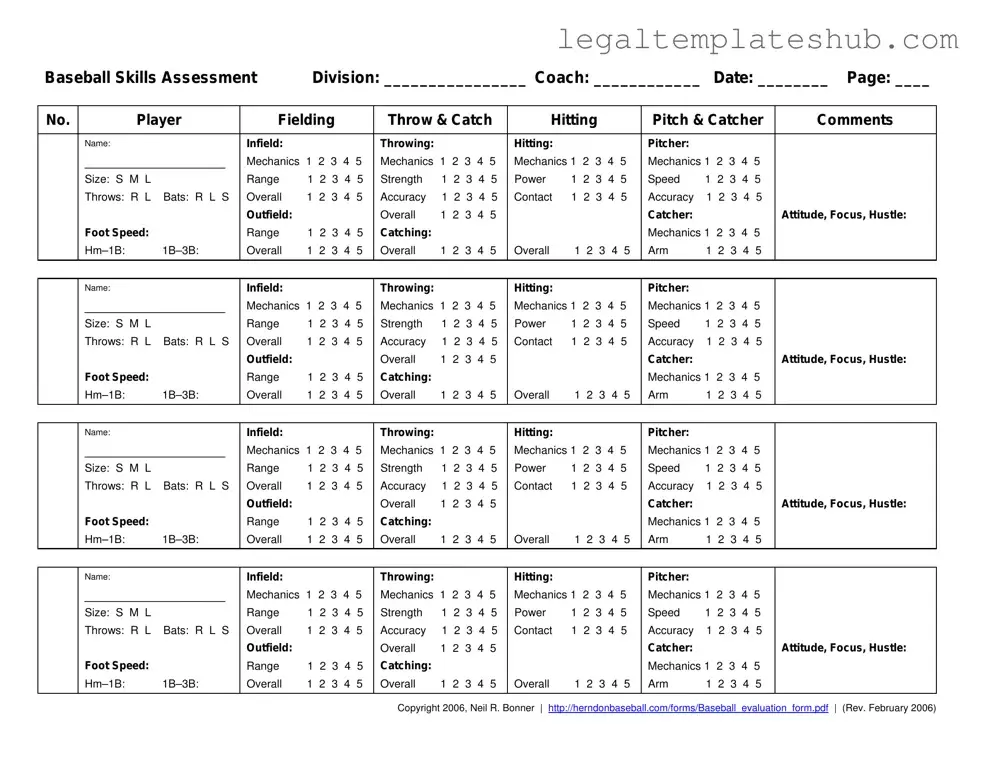Blank Baseball Assessment PDF Form
The Baseball Skills Assessment Form is a structured tool used to evaluate players' abilities in various baseball skills during tryouts. Coaches assess players on key performance areas such as fielding, throwing, hitting, and pitching, using a simple scoring system. This comprehensive evaluation not only helps in selecting team members but also provides valuable feedback for players to improve their game.
Ready to assess your skills? Fill out the form by clicking the button below.
Access Editor
